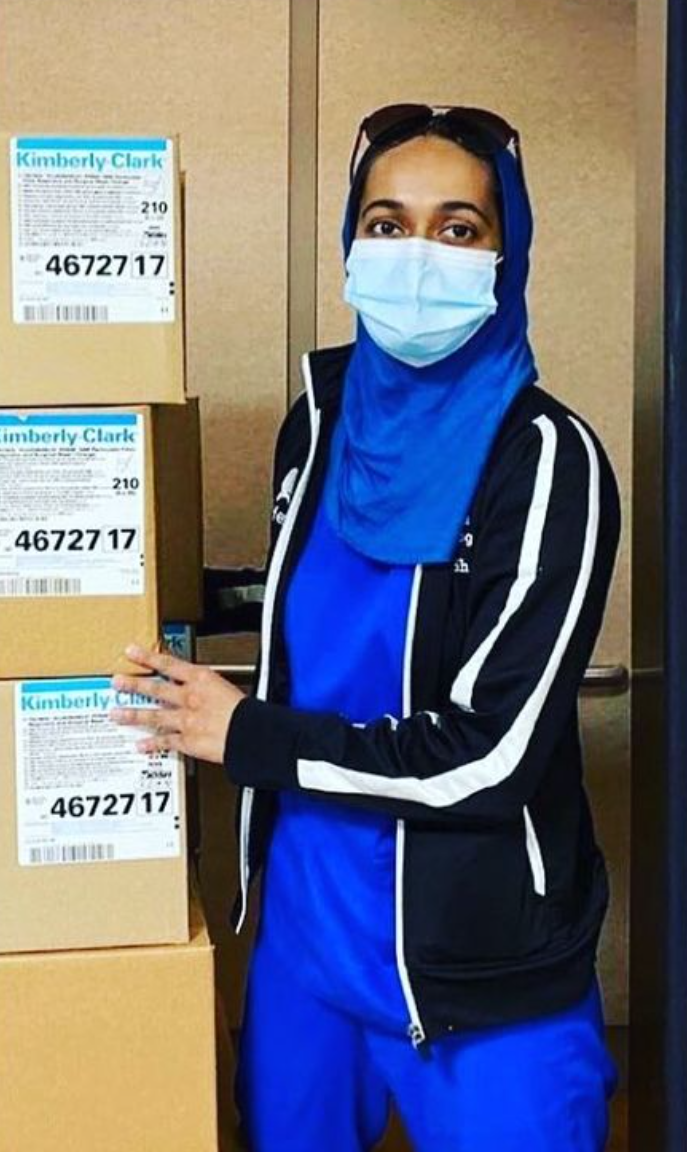As COVID-19 restrictions lift across the United States and life begins to return to a post-pandemic normal, it’s hard to believe that the virus is still running rampant in other parts of the world.
But in India, where the dying are turned away from hospitals due to lack of space, and where crowds frantically gather to receive one of the few available vaccines, COVID-19 is very much real.
In April, when India started to battle its second surge of infections, Noor Shaik wanted to help. Though she and her parents moved from Bangalore, India to Bensalem when Shaik was 6, much of her family remains in India.
Growing up, Shaik was always a go-getter. She was the Bensalem High School class of 2010 valedictorian, and is now in her final year at Sidney Kimmel Medical College at Thomas Jefferson University, with goals of working in neurology. So when Shaik set out to help those in her home country, there was a good chance that she’d be successful in her efforts.
She just wasn’t prepared for how much.
Shaik will never forget the date of April 24. After an emotional phone call with her grandmother in India, Shaik felt distraught.
“It was in that setting of seeing these dreadful and heart wrenching images that were coming out, and most of my family is still based in India,” she said. “And aside from my family being there, there’s just so much suffering going on. I had seen a lot of that firsthand while I was here at Jefferson in the hospitals. It really hit home to me that we really need to try to do something.”
Her mother suggested that Shaik email her academic adviser, Wayne Bond Lau, and ask if he knew anyone willing to help secure a few donations and personal protective equipment. Since this was a Saturday, Shaik intended to wait until Monday to send the email. She didn’t want to bother him over the weekend.
“My mom said, ‘No. People are dying. Email him right now,’ ” reflected Shaik.
Lau replied Sunday morning, telling Shaik he would reach out to a contact with Jefferson’s supply chain. Shaik quickly learned that Jefferson was willing to donate three pallets of supplies.
“I thought we’d get maybe three boxes, not three pallets,” she said.
Word rapidly spread across Shaik’s community. Before she knew it, her Philadelphia apartment and family’s Bensalem home were packed to the brim with donated supplies.
“We had 92 boxes of N95s alone, along with thousands of gowns,” she said.
All of this was collected during the first week of Shaik’s initiative, which is now known as the nonprofit Breath for Humanity. A week later, Shaik received over 2,000 pounds of face masks and shields. Also donated by ICNA Relief SHAMS Clinic was $200,000 worth of tracheostomy tubes, oxygen concentrators and other ventilation support. These, said Shaik, were vital because many in India are forced to choose between using the oxygen themselves, or giving it to a dying loved one. There’s just not enough for everyone.
“It completely blew our minds that people were willing to open their hearts and just help so much,” said Shaik.
The big question was, how was she to transport all of these materials to India? A GoFundMe was launched to raise funds for shipping. Nearly $8,000 has been raised so far.
To date, three shipments have reached India. These included 80,000 N95s, 1,200 shields, hundreds of tracheostomy kits and 37 oxygen concentrators, with seven more ready to be sent. Shaik is directing the supplies to HBS Hospital, Mercy Mission/Thanal and Empower India, all of which are distributing them to those most in need.

As Breath for Humanity continues to gain traction, Shaik hopes her efforts raise awareness of the severity of the pandemic in India. Though news stations report on the crisis, there are many Americans who call the stories “fear mongering.”
Shaik was a special guest at a recent Rotary Club of Bensalem meeting, during which she shared some striking clips. One video showed a man fighting for breath in the back of a car. His family drove miles to secure him oxygen, but it was too late. His mother was inconsolable. Meanwhile, a woman mourned the death of her 45-year-old brother, who was a hospital worker. Another woman was shown being denied a bed in Delhi. She was left in the care of her family on the pavement outside.
Also shown by Shaik was a cartoon of Strawberry Boy and Grapefruit Girl, who tried to see who could hold their breath longer. Both lasted only a few seconds. Shaik then transitioned to a more serious video, which showed a doctor simulating what a patient suffering from COVID sees right before they’re intubated. They typically breathe 40 times a minute as their oxygen level dips below 80.
“As it becomes harder and harder for them to breathe, they start breathing faster. They try to move more air in and out,” said Shaik. “Can you imagine hyperventilating, breathing that quickly, not being able to pull enough air in? And on top of that, how long can you hold your breath? How long can you go without oxygen? It’s not too long. In that context, while the U.S. is thankfully coming out of what seemed to be one of the biggest and strongest clutches of COVID, a lot of the other parts of the world are still very much in the grips of COVID.”
Breath for Humanity’s GoFundMe can be found at bit.ly/3AgXRXd. Learn more at breathforhumanity.wordpress.com/blog and on Instagram and Twitter @breath4humanity.
Samantha Bambino can be reached at [email protected]


